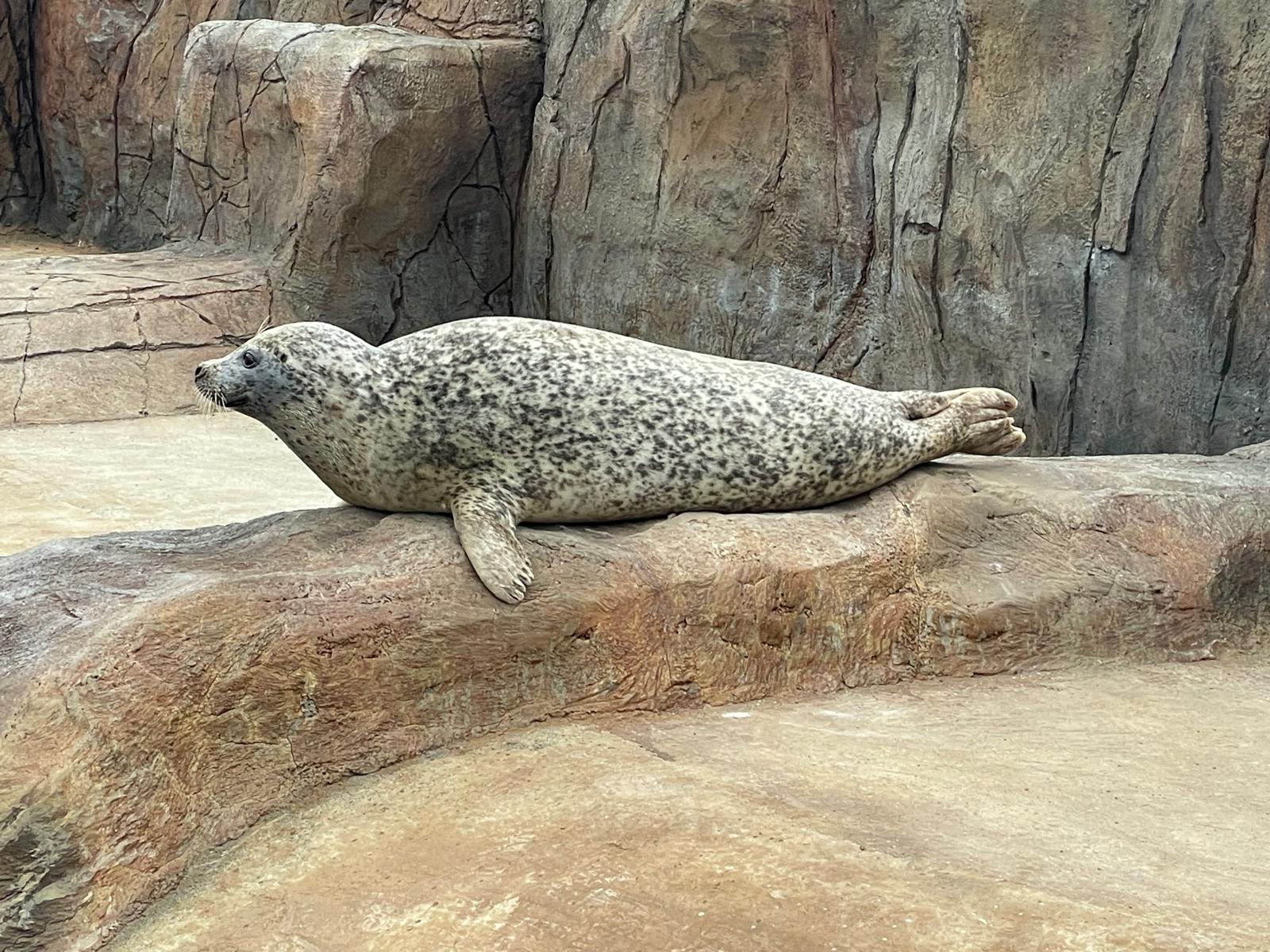
Harbour seals (Phoca vitulina), also known as common seals, are one of the most widespread marine mammals, found along the coastlines of the Northern Hemisphere. They are smaller than their grey seal cousins, with distinctive V-shaped nostrils and a more rounded, dog-like face. Harbour seals are well-adapted to life at sea, spending much of their time hunting fish, squid, and crustaceans in coastal waters before hauling out on beaches and rocky shores to rest and breed.
Harbour Seals in Scotland
Scotland is home to some of the largest populations of harbour seals in Europe, with thriving colonies scattered across the country’s rugged coastline. These adaptable marine mammals can be found in estuaries, sandy bays, rocky shorelines, and even in the deep lochs of the west coast. The waters around the Firth of Forth, where our aquarium is based, are a prime habitat for these charismatic creatures. However, while Scotland’s harbour seal population remains significant, it has seen declines in some areas, prompting conservation efforts to ensure their survival.
Habitat and Distribution
Harbour seals prefer sheltered coastal environments, favouring areas with plentiful fish stocks and safe haul-out sites where they can rest undisturbed. Scottish waters, from the Hebrides and the Northern Isles to the east coast and the Firth of Forth, provide excellent conditions for these seals. Unlike grey seals, which tend to breed on exposed beaches, harbour seals often choose tidal sandbanks, sea caves, and small rocky islands as their preferred pupping sites.
Population and Conservation
While harbour seals are still a common sight along Scotland’s shores, their numbers have been decreasing in some regions, particularly on the east coast. Scientists are working to understand these declines, with potential causes including shifts in fish populations, environmental pollution, and the impacts of climate change. Conservation initiatives such as the Scottish Marine Protected Areas (MPA) network and ongoing seal monitoring programmes aim to safeguard their future.
Another factor affecting their population is human activity. Harbour seals are naturally curious but can be easily disturbed by boats, water sports, and coastal development. Responsible wildlife watching and adhering to Scotland’s marine wildlife code are essential in minimising stress and disruption to these animals.
Historic Folklore and Mythology
Seals have played a significant role in Scottish folklore for centuries, often depicted as mysterious and otherworldly beings. One of the most famous legends is that of the selkie—a creature that can shed its seal skin to take human form. According to tales passed down through generations, selkies would come ashore under the light of the full moon, only to return to the sea if their seal skin was found and hidden by a human. These myths highlight the deep connection between Scotland’s coastal communities and the seals that share their shores.
The History of Harbour Seals in Scotland
Historically, seals were hunted for their meat, oil, and pelts, but today, they are legally protected under the Marine (Scotland) Act 2010. This legislation helps ensure that Scotland’s seal populations can continue to thrive while balancing the interests of the fishing industry and marine tourism.
Our Resident Harbour Seals
At Deep Sea World, we are lucky to have four incredible resident harbour seals: Marvolo, Sofus, Benji, and Cody. They live in our Seal Rock Exhibit, which provides a safe and enriching environment designed to mimic their natural habitat. Our seals are ambassadors for their wild counterparts, helping to educate visitors about the importance of marine conservation and the fascinating lives of these coastal creatures.
Visit Us and See the Seals in Action
A visit to Deep Sea World offers a unique opportunity to get up close to our resident seals and learn more about their behaviour, diet, and conservation. Our daily seal feeding sessions and talks provide insight into the lives of harbour seals, their role in the ecosystem, and how we can help protect them in the wild.
Help Protect Scotland’s Harbour Seals
There are many ways to support harbour seal conservation in Scotland. You can:
- Follow Scotland’s marine wildlife code when observing seals in the wild.
- Support marine conservation charities and initiatives that work to protect Scotland’s coastal environment.
- Reduce plastic waste and pollution, which can harm marine life.
- Spread awareness about the importance of Scotland’s seal populations.
By taking small actions, we can all play a part in preserving these incredible animals for future generations to enjoy.
Type
Mammals: Large sea born predator
What do they eat?
Squid, crustaceans, molluscs and fish
Size
Max 185cm
Water Type
Salt Water
Where are we?
Atlantic Ocean

